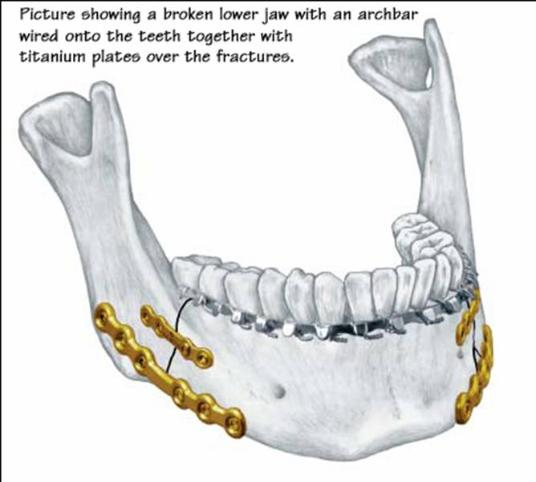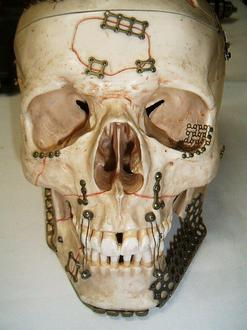A broken lower jaw usually causes pain and swelling, changes the way the teeth fit together, and prevents the person from fully opening the mouth.
Fractures of the middle part of the face can cause swelling, double vision, facial numbness, a sunken eyeball, changes in the way the teeth fit together, and/or inability to fully open the mouth.
Doctors can usually detect jaw and face fractures during an examination, but usually x-rays are taken or computed tomography (CT) is done.
A lower jaw fracture is treated by resting the jaw, surgery, or wiring the jaw closed until bones heal.
A midface fracture can be treated surgically, but surgery usually is done only if the fracture causes problems other than pain and swelling.
The term jaw fracture often refers to a break of the lower jaw (mandible). Fractures of the upper jaw (part of the bone called the maxilla) are sometimes called jaw fractures but are usually considered facial fractures.
The mandible is most often broken as a result of blunt trauma, such as being punched or hit with a baseball bat or other object.
Fractures of the maxilla can occur when the front of the face smashes against an immovable object, as occurs in a fall from a height or a motor vehicle crash. Some are caused by being hit by a blunt object such as a fist or weapon. Some jaw fractures break only a tooth socket.
Fracture of jaw always lead derangement of your teeth occlusion and it will always require specialized in the field for the teeth alignment restoration.


